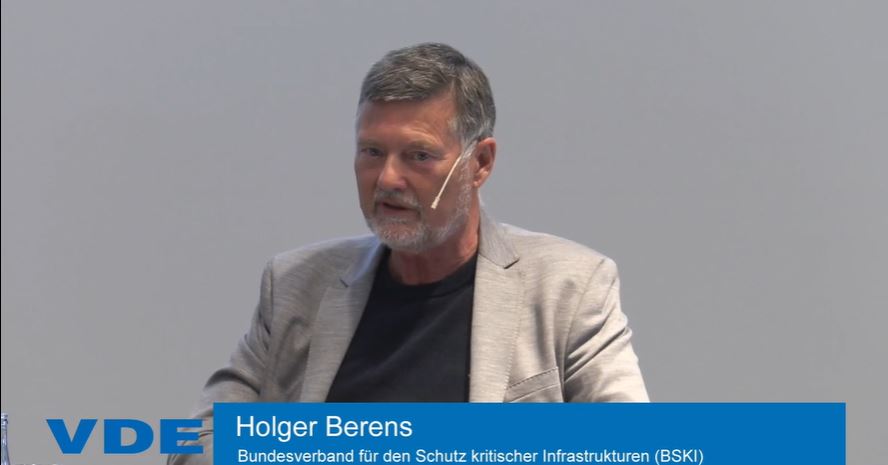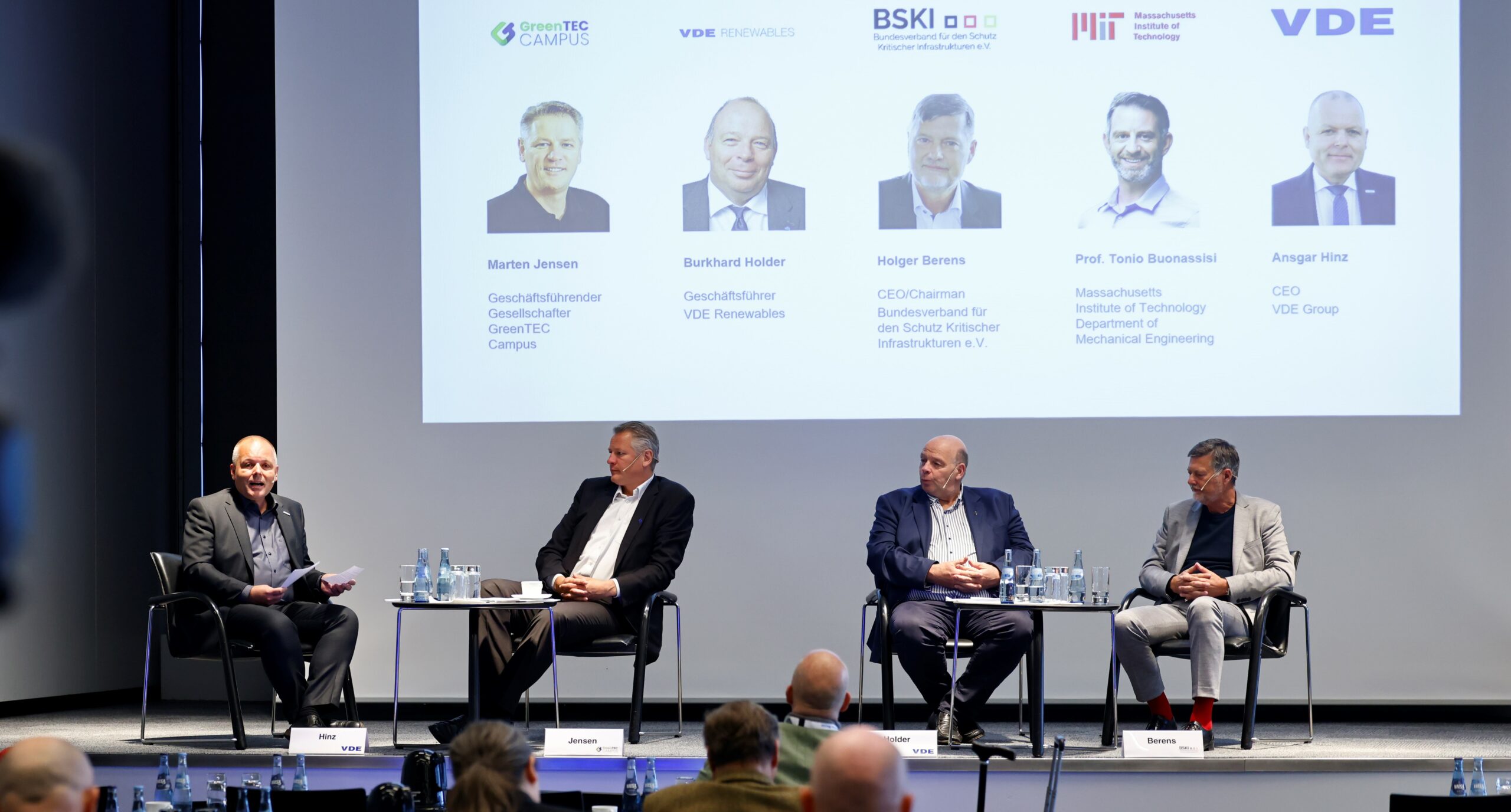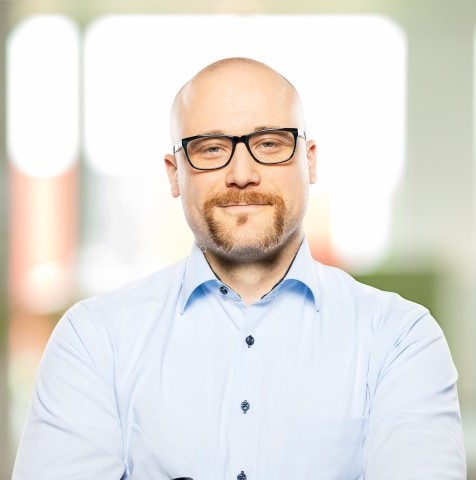Panel line-up
Ansgar Hinz, CEO of the VDE Group, moderates the conference and puts questions to the participants. These are (from left to right) Marten Jensen, Managing Partner of GreenTEC Campus, Burkhard Holder, Managing Director of VDE Renewables GmbH, Holger Berens, Chairman of the Federal Association for the Protection of Critical Infrastructures (BSKI) e.V. and Managing Partner at Concepture, joined via video by Prof Tonio Buonassisi, Global Head Solar Programs, Massachusetts Institute of Technology (MIT).
Findings from the last few months
The war in Ukraine also features prominently in this round of talks. Moderator Ansgar Hinz begins by pointing out that a paradigm shift in security and energy policy is unavoidable in view of the developments in Ukraine and Germany’s associated dependence on Russian energy imports. The sharp rise in attacks from cyberspace can also be directly or indirectly linked to the war.
Accelerating the energy transition
Everyone agrees on the first major topic of the energy transition. In order to manage the transition away from Russian fossil fuels, the expansion of the grid for renewable energies must be accelerated, bureaucracy reduced and storage capacities of various kinds built up. Burkhard Holder from VDE Renewables brings an interesting aspect into the discussion, which is often somewhat overlooked in the debate: all this new infrastructure, all this new energy has to be built, installed and maintained by people. However, there are currently not enough of them available. Unfortunately, the shortage of skilled labour is also having an impact here.
Security of supply – what is it actually?
The topic switches to security of supply and attacks from cyberspace. Holger Berens describes once again that security of supply in this context must be seen in its three core elements (cyber or information security, energy security and transport security). Focusing on just one of the pillars is not enough.
Holger Berens begins by pointing out that cyber attacks are not a new phenomenon. He also points out the different motives of the attackers. We have already explained these types of perpetrators in more detail in another of our articles. Organised crime has now built up a veritable ‘franchise system’ that has spread across the darknet. For example, it is possible to download and distribute pre-programmed ransomware for a share of the extorted sum.

An old acquaintance: Human vulnerability
Holger Berens must also take this opportunity to point out that one of the biggest and recurring vulnerabilities remains the human factor. However, creating awareness is not just a matter for employees. Managing directors and management staff must also live this and take it seriously.
At this point, Prof Buonassisi provides an interesting insight into an MIT experiment. A freshly installed PC system was connected to the network. After just 12 hours, 25,000 port scans from bots were recorded on the system. This gives an indication of how active the criminals are in cyberspace.
Do not counteract measures
An exciting topic is also touched on in the discussion. Despite all caution and all measures, care should be taken to ensure that the safety measures taken are not counteracted elsewhere by negligence or poor planning. To make the example a little more tangible: A perfectly protected network is unfortunately of no use if you can physically access all IT locations in the company building without any problems (e.g. server room). This is where the disciplines of security become blurred. Security must be viewed and planned holistically at this point – an old credo and a strength of Concepture.
Conclusion
In order to master the challenges of the future and be able to provide energy securely and reliably, several things need to work together. Bureaucracy must be reduced and storage capacities created. From a security perspective, however, a rethink must also take place to some extent. Municipalities in particular need to see themselves as part of critical infrastructure. There also needs to be a realisation that there can be no such thing as 100% security – a risk assessment, i.e. the identification of priorities, is a prerequisite for ensuring that these can be effectively protected.
Picture credits Cover picture: Copyright: Hannibal / VDE





